Barberry Thunberg "Atropurpurea nana": description, planting and care
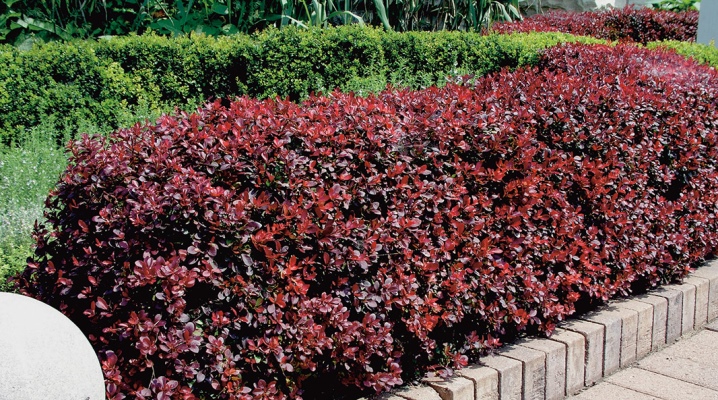
Barberry Thunberg "Anthropurpurea" is a deciduous shrub of the numerous Barberry family. The plant comes from Asia, where it prefers rocky areas and mountain slopes for growth. Barberry Thunberg Atropurpurea Nana with minimal maintenance will become a real decoration of the site for many years.
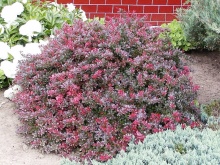
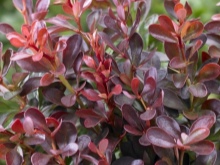
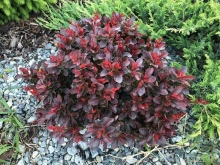
Peculiarities
For cultivation, a dwarf variety of Thunberg barberry is used: Atropurpurea Nana. This variety belongs to perennials, the life cycle of a plant can last 50 years. Barberry "Atropurpurea nana" is an ornamental shrub, reaching a height of 1.2 m. The crown grows in a diameter of about 1.5 m. The variety is characterized by slow growth, high frost resistance, can withstand temperatures down to -20 ° C.
In addition, it tolerates drought and bright sunlight well. The flowering period is in May and lasts approximately 3 weeks. It prefers well-lit open areas for planting; in partial shade, the decorative appearance of the leaves is lost, they turn green. The fruits are bitter-sour, therefore they are not suitable for food. The appearance of the Thunberg barberry Atropurpurea Nana is very decorative.
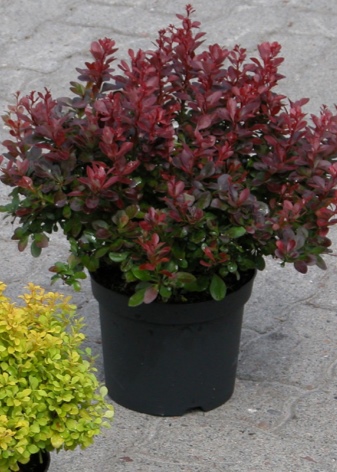
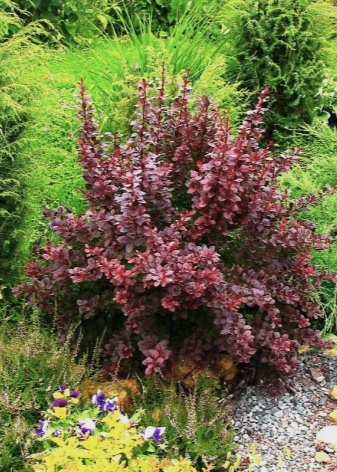
Its description and characteristics:
- spreading crown, with numerous shoots;
- young branches have a dark yellow bark, but as it matures, it acquires a dark red hue;
- the main mature stems turn purple-brown;
- the branches are covered with dense prickly thorns about 80 mm in length;
- leaf plates are small, elongated;
- the base of the leaf is narrowed, and the top is rounded;
- the color of the leaves is red, but with the onset of autumn it acquires an unusual carmine brown tone with a slight lilac tint;
- foliage on the bush keeps even after the first frost;
- flowering abundant and long;
- inflorescences are located along the entire length of the shoots;
- the flowers have a double color: the outer petals are burgundy, and the inner ones are yellow;
- the fruits of the shrub are oval, dark red, numerous.
Fruiting of barberry begins at the age of 5, when it stops growing.
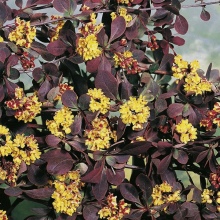
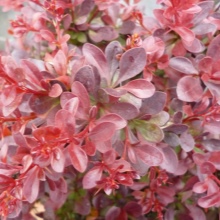
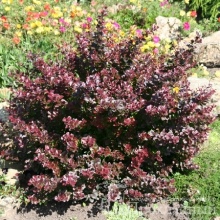
How to plant?
The shrub is rather picky about growing conditions. It is worth planting barberry in the soil in the spring, when it warms up, or in the fall, about a month before frost. It is better to choose a plot that is well lit so that the foliage does not lose its decorative effect, although the shrub grows well in the shade. The roots of the plant are located close to the soil surface, therefore they are very sensitive to waterlogging.
The place for planting barberry "Atropurpurea nana" should be chosen on a flat area or with a slight elevation.
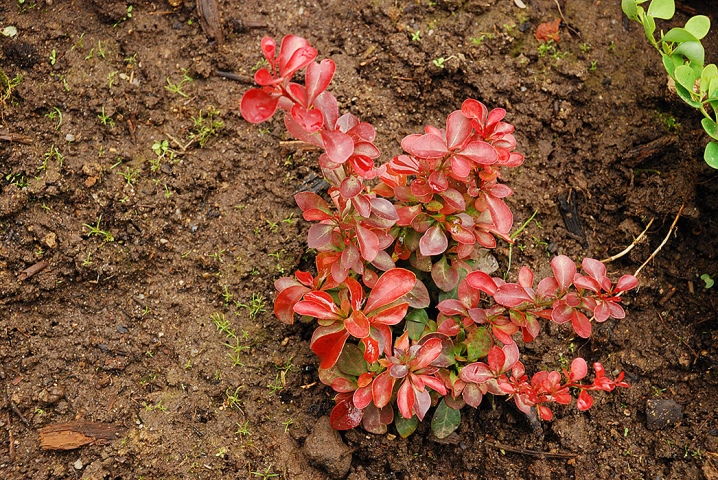
The soil is suitable fertile, with good drainage and neutral pH. You can plant a plant in 2 ways:
- in a trench - when planting bushes in the form of a hedge;
- into the hole - for a single disembarkation.
The pit is made 40 cm deep, humus and sand are added to the soil in equal parts, as well as superphosphate (for 10 kg of soil mixture, 100 g of powder). After planting, the bushes are mulched and moistened. It is worth landing in the early morning or after sunset.

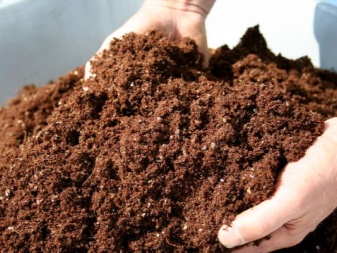
How to take care of it properly?
Barberry Care Thunberg Atropurpurea Nana is not difficult and does not take much time.
- Watering the plant needs periodic, since it tolerates drought well.In hot weather, it is enough to water the bush once every 10 days, but the amount of liquid should be voluminous, water is brought under the root. Seedlings should be watered every evening.
- Top dressing in the first year is applied in the spring, organic is used. Adult barberries are fertilized three times per season: in early spring (nitrogen-containing fertilizing), in autumn (potassium-phosphorus) and before winter (organic matter diluted with water, at the root).
- Pruning is done mainly in May and June. During the procedure, dry and weak branches are removed, the bush is thinned out. The shape given to the plant should be maintained every year.
- Preparation for wintering consists in mulching with straw or peat. In colder regions, the bushes are covered with spruce branches. Tall bushes are tied with a rope, a frame is made from a mesh and dry foliage is poured inside. The top is covered with agrofibre or other similar material.

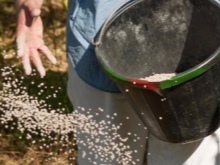
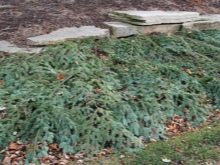
Adult bushes (over 5 years old) do not need shelter for the winter, even if the shoots freeze, they quickly recover. Thunberg barberry can be damaged by aphids, sawflies or moths. A solution of chlorophos or laundry soap is used against them. From diseases, bushes can be affected by spotting, powdery mildew or rust. Treatment consists in removing diseased parts and treating the plant with fungicides.

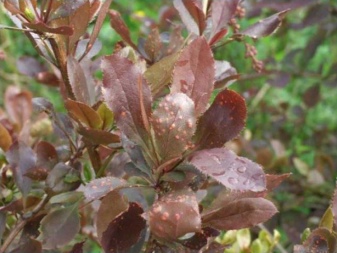
Use in landscape design
Barberry Thunberg "Atropurpurea nana" due to its decorative appearance has gained popularity among landscape designers. The scope of its application is quite wide:
- in the form of a hedge;
- along the tracks;
- in rabatkas and rockeries;
- salt plants near water bodies;
- as a decoration for benches and gazebos;
- as the boundaries of alpine slides;
- in a variety of compositions with other shrubs.

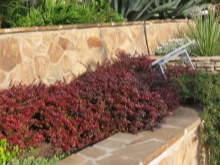
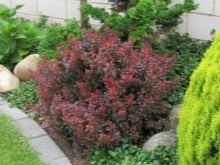
For more information about this barberry, see the next video.



































































The comment was sent successfully.